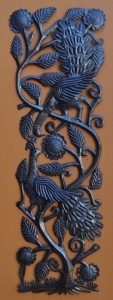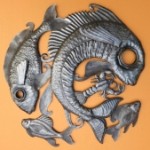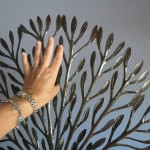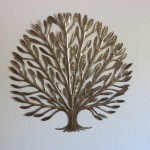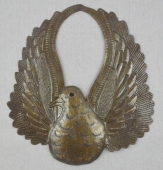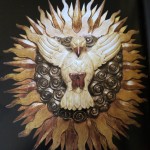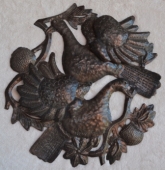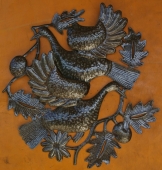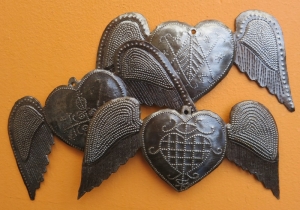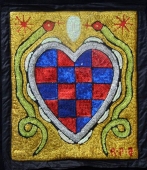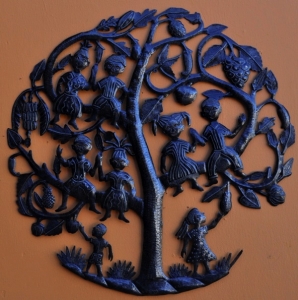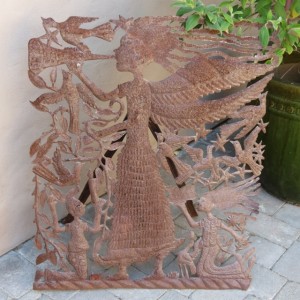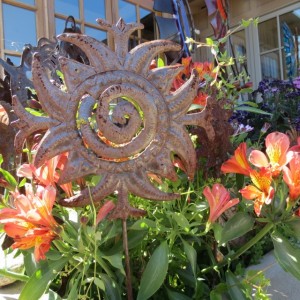Create Your Own “Peacock Room”
Isn’t this peacock to the left by Yves Rober Buisson beautiful? It perfectly captures the bird’s majesty and elegance. And the one right, “Peacocks in Love” by Norvh St. Bonheur is a scene of quiet splendor. Though both pieces are wonderfully rendered and appropriate to numerous decorative styles, neither quite depicts the characteristic with which the peacock is most closely associated: Pride. Leave that to James Whistler…
In the late 1870’s Thomas Jeckyll, a respected interior designer was commissioned by Fredrick Leyland, a wealthy shipowner from Liverpool, to create a room to display his collection of Chinese porcelains in his London home. The focal point of the room was a painting by James Whistler, entitled “Princess from the Land of Porcelain.” The artist was working in Leyland’s house on some interior painting in the foyer when the designer asked for his help in painting some of the trimwork in the porcelain room. Whistler volunteered to take over and Jeckyll, happy to have Whistler finish what little remained of the job, returned to his business in Liverpool.
At that point, artistic passion and prideful zeal overtook Whistler. In addition to touching up the wainscoating with yellow paint, as agreed upon with Jeckyll, Whistler covered the entire ceiling with imitation gold overleaf and painted it with a lavish pattern of peacock feathers. He then trimmed the shelving for the porcelains in gold and embellished four of the rooms shutters with four magnificent peacocks.
In his own words he explains, “Well, you know, I just painted on. I went on ―without design or sketch― it grew as I painted. And toward the end I reached such a point of perfection ―putting in every touch with such freedom― that when I came round to the corner where I started, why, I had to paint part of it over again, as the difference would have been too marked. And the harmony in blue and gold developing, you know, I forgot everything in my joy in it.” Forgot everything indeed. While Leyland was yet away, Whistler went so far as to entertain his own guests in the sumptuous surroundings of his patron’s home.
When Leyland finally returned, he was shocked by Whistler’s costly and presumptive behavior and refused to pay for more than half of the total amount billed. They quarrelled violently and in spite or retaliation, Whistler secretly gained access to the room once again. He painted two fighting peacocks with features clearly reflecting those of himself and Leyland, titling the work, “Art and Money, or The Story of the Room.” (View photos of his finished room here.) In a final retort, Whistler proudly told Leyland, “Ah, I have made you famous. My work will live when you are forgotten. Still, per chance, in the dim ages to come you will be remembered as the proprietor of the Peacock Room.”
Contributed by Linda for It’s Cactus


